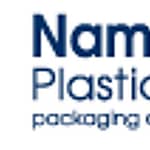Augmented reality (AR) is the newest in a long line of innovations that have changed the way people interact with the world around them. It’s a technology that has the potential to change how people do business, and one that many companies are already starting to explore.
Especially with the many promising use cases for AR in the workplace, it comes as no surprise that many organisations are looking to get on board with augmented reality. And it’s not just because it’s trendy, but it really has the potential to improve employee engagement and productivity.
so What is augmented reality?
Augmented reality is the integration of virtual elements into the physical world. It’s a technology that allows you to see virtual objects in a similar way you would real-world objects. It can be used to add a layer of additional detail to your surroundings, or it can transform a simple experience or product into something much more engaging.
For the corporate world, this can be a powerful tool, allowing companies to better connect with their customers, provide new ways to interact with products and services, and create a more immersive experience for employees.
How can augmented reality be used in the workplace?
Augmented reality provides opportunities for application in a variety of industries, and that can be used to bring new efficiencies and capabilities to existing processes in numerous ways. Although the technology is still in its early stages, there are a number of ways that augmented reality can be implemented in work settings for improving employee engagement and workplace efficiency.
The following are a seven ways of many where augmented reality can be used to enhance workplace engagement:
Product Development.
Augmented reality can be used during the product design process to help create prototypes of new products. This means businesses can use AR to create new designs, validate them, understand how they function, see how they will look and feel when consumers receive them and test these designs on real-world products.
The technology can allow businesses to see how their idea works before actually building it, saving time and money in the long run. It can also help employees better test various aspects of a product before manufacturing begins. The interactive aspects of AR can even help employees immerse themselves in the design process through the use of virtual prototypes and simulations that can be used to test possible scenarios and outcomes.
Promoting products and services.
Augmented reality is a powerful marketing tool that can help improve the customer experience. Augmented reality adds an interactive element to marketing, allowing businesses to give customers a hands-on experience with their services and products. It can be used to show customers how a product works, how it looks in use, and what it’s capable of.
For employees, this means being able to promote their brand through interactive means like 3D content and immersive games. This can include anything from creating a branded game that showcases the company’s products to create a virtual store where customers can shop.
Event planning.
Augmented reality can help event planners and attendees alike with event coordination by creating useful digital maps of spaces that help people get around, avoid obstacles and find certain resources at their fingertips. This can help increase the efficiency of event planning and offers a new way to plan events, by instantly visualizing ideas before they even come to life.
The technology can also help put together a more immersive experience for attendees by providing them with information about the event and its surroundings, as well as highlighting what’s important. Employees can do this through virtual tours and fully-immersive replicas of the space that can be altered and interacted with, giving event planners the ability to test out new ideas without having to spend a dime on physical prototypes.
Training and onboarding new staff.
With augmented reality, addressing the information gaps for new hires is simple. AR can be used to make virtual training more engaging and help employees get acquainted with functional tasks and processes in a more hands-on way. This can be especially useful for new hires who may have to learn specific skills that are difficult to teach through traditional methods.
It allows employees to practice skills that are difficult to learn from traditional methods and even makes the learning and onboarding processes more efficient and engaging with the option of creating personalized training programs. This can be done through AR-based demonstrations of how to perform tasks and processes, identifying objects in 3D, virtual equipment training, and even providing an interactive onboarding experience with activities like AR-based scavenger hunts.
Visualising data and analytics.
Not only can augmented reality be used for creating results, but it can also be used as a powerful tool for visualising them through analytics and data. Visualisation is the process of converting complex data sets into images and infographics that can be understood by anyone, and augmented reality can be used to create these visualisations in ways that makes them more engaging than traditional methods.
Data visualisation through AR can allow for better viewing of patterns, trends, outliers, or information in large amounts of data. This creates an immersive environment for an intuitive understanding of the information being presented, making it easier to make decisions based on those data.
Companies can make use of this technology with interactive 3D models and animations, as well as by placing the data in a real-world context through the use of AR. Especially with data formats like graphs, charts, and maps, AR can make the data easier for your team to understand and digest for more informed decision-making.
Meetings and conferences.
Augmented reality technology has introduced a more immersive way of holding meetings. It can be used to bring in remote participants, display presentations, visualise simulations, and even digitally recreate the environment of a site visit.
It allows for a more interactive meeting where participants can visualise and discuss their ideas in real time, as it allows all the participants to be present at once. AR can be utilised through means like virtual meeting rooms, virtual collaboration spaces, and even virtual field trip experiences.
Collaboration.
In addition to collaboration, augmented reality allows for a more seamless and engaging experience, as it enables participants to work together on shared documents or presentations in real time. It fosters a sense of exploration and discovery, making it easier to share ideas, visualise concepts, and imagine new solutions.
This type of collaboration provides a unique opportunity to explore new concepts that may not be possible with traditional methods. By using AR it is possible to create an impartial environment where everyone has an input toward reaching a common business goal. This can be achieved through virtual workspaces and team-building activities that are based in the real world, and which allow participants to explore and interact with the environment, as well as each other.
Final Thoughts
Augmented reality is one of the most exciting technologies the world has seen in recent years. While it may take some time before workplaces start realising its full potential and carry out mass adoptions, organisations should start exploring ways in which they can use augmented reality to improve their workplace engagement and performance.
Organisations that are able to successfully implement AR into their operations will be at an advantage over those that have not, as they will be better able to adapt and innovate in a rapidly changing world. And with an abundance of applications and use cases for AR, workplaces are in no shortage of options to explore.
Author: Daniel Cruz – Editorial Member, Hourly.
Photo credit: Freepik




